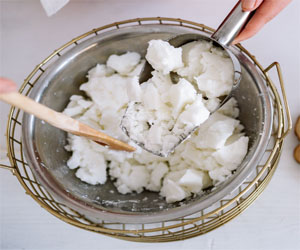


Exploring The World Of Embroidery Stitches
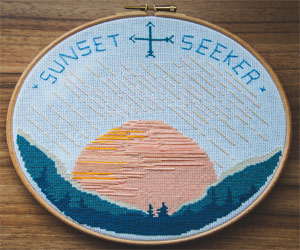
Embroidery, a form of textile art that dates back thousands of years, is a testament to human creativity, patience, and precision. At the heart of this craft lies a diverse range of embroidery stitches, each a unique brushstroke on the canvas of fabric. From the basics to the most intricate, embroidery stitches have the power to breathe life into fabric, creating intricate patterns, images, and designs.
The Building Blocks: Basic Embroidery Stitches
Every embroidery journey begins with a handful of fundamental stitches that serve as the foundation for more complex techniques.
Running Stitch: A basic stitch formed by passing the needle and thread through the fabric, creating a straight line of evenly spaced stitches. The running stitch is often used for outlines and simple embellishments.
Backstitch: Similar to the running stitch but with the added feature of being more secure. The backstitch involves doubling back through the previous stitch, creating a continuous line. It's commonly used for fine lines and lettering.
Satin Stitch: A technique where stitches are placed closely together, covering a larger area. This creates a smooth, satin-like surface. It is frequently used for filling shapes and adding vibrant colors to designs.
Variations and Flourishes: Advanced Embroidery Stitches
As embroiderers become more proficient, they delve into a treasure trove of advanced stitches, each with its unique characteristics and uses.
French Knot: A highly decorative stitch that creates raised, textured dots. These knots can be used for flowers, eyes, or other small, ornamental details.
Chain Stitch: A looping stitch that forms a chain-like line. It's versatile and can be used for both lines and filling areas, creating a textured, rope-like appearance.
Feather Stitch: This stitch resembles the delicate fronds of a feather, with stitches on either side of a central line. It is often used to depict leaves, vines, or other organic elements.
Bullion Knot: A stitch that creates a raised, coiled effect. It's perfect for floral and three-dimensional embroidery work, adding depth and dimension.
Embroidery In Culture And Tradition: Regional Stitches
Different cultures around the world have their unique embroidery stitches and styles, often reflecting the traditions, values, and artistic sensibilities of their communities.
Sashiko (Japan): Known for its geometric, repetitive patterns, sashiko uses running stitches to create designs that are both decorative and functional. It's often used for mending and reinforcing fabric.
Crewelwork (England): This traditional embroidery style employs wool threads and intricate stitches to create detailed designs, often depicting pastoral scenes and floral motifs.
Hedebo (Denmark): Characterized by its delicate cutwork and intricate whitework embroidery, Hedebo is a reflection of Danish needlework traditions, often used for table linens and clothing.
Embroidery As An Art Form: Modern Stitches And Innovations
Embroidery has evolved to include modern, innovative stitches, often driven by a fusion of traditional techniques with contemporary art. Artists are pushing the boundaries of embroidery, incorporating new materials, technology, and concepts, leading to a renaissance in the craft.
Embroidery stitches are the vocabulary of an ancient art form, allowing artists to communicate and express their creativity on fabric. Whether you're a beginner or an experienced hand, the world of embroidery stitches is a never-ending journey of exploration, innovation, and inspiration. As you pick up your needle and thread, remember that each stitch is a brushstroke on a canvas, telling your unique story, one thread at a time.
A Time-Honored Craft
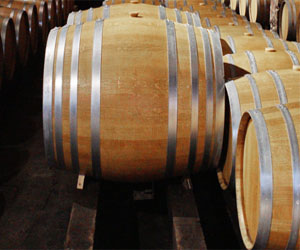 Once the grapes are collected, they are processed through various methods, including crushing, destemming, and pressing. The choice of these methods, like the choice of grape variety, varies from region to region, reflecting the traditions and techniques that have been perfected over time.
Once the grapes are collected, they are processed through various methods, including crushing, destemming, and pressing. The choice of these methods, like the choice of grape variety, varies from region to region, reflecting the traditions and techniques that have been perfected over time.
Fermentation And Aging: The fermentation stage is where the magic happens. Yeasts convert the grape sugars into alcohol, and this is a stage where winemaking traditions show their depth. Some wineries still rely on wild, naturally occurring yeasts for fermentation, while others use cultivated yeasts to ensure consistency. The decision can greatly influence the wine's character.
Aging is another crucial aspect of winemaking traditions. Many winemakers use oak barrels, which can impart flavors and aromas to the wine, adding complexity and depth. The length and type of aging are often guided by tradition. For example, in Bordeaux, it's common to age red wines in oak for extended periods, while in the New World, there's often a preference for a more fruit-forward style with shorter aging.



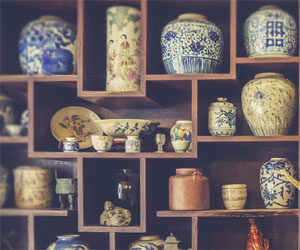
Earth-Saving Crafts
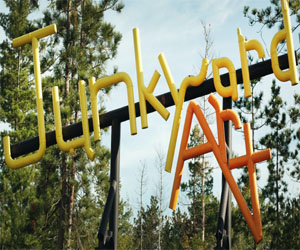 Environmental Impact
Environmental Impact
One of the most significant aspects of earth-saving crafts is their direct impact on the environment. By reusing materials, these crafts reduce the demand for new resources, saving energy and conserving raw materials. Crafting from waste materials not only lowers carbon footprints but also lessens the burden on landfills. It's a small, yet crucial, step toward mitigating the detrimental effects of overconsumption and waste generation.
Empowering Individuals
Engaging in earth-saving crafts is empowering. It fosters a sense of self-sufficiency and self-expression. Crafting allows individuals to take control of their environmental impact and make conscious choices. It encourages people to think outside the box and find new uses for old items, thereby reducing their reliance on mass-produced, environmentally-harmful goods.
A Platform For Innovation
Earth-saving crafts promote innovation and creativity. When faced with limited resources, crafters often devise ingenious solutions to repurpose materials. This sparks fresh ideas and unique designs. The combination of limited resources and boundless creativity gives rise to one-of-a-kind creations.
Turning Old Into Gold
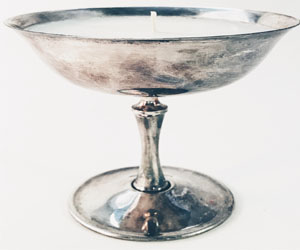 2. Gather Inspiration
2. Gather Inspiration
Before diving into a project, seek inspiration from online platforms, books, or upcycling communities. Ideas are everywhere, and seeing what others have created can fuel your creativity and help you come up with unique, sustainable designs.
3. Choose Quality Over Quantity
When selecting items for upcycling, opt for quality over quantity. Well-made, durable pieces will last longer and provide better raw materials for your projects. This approach ensures your upcycled creations have a longer life as well.
4. Declutter Responsibly
Before tossing old items, consider whether they can be upcycled. Decluttering responsibly by finding new uses for items you no longer need reduces your environmental impact and keeps useful materials out of landfills.
5. DIY Tools And Supplies
Invest in a set of basic DIY tools, like a good-quality glue gun, a sewing machine, and paintbrushes. Having the right tools will make your upcycling projects easier and more enjoyable.
An Artistic Masterpiece In Thread
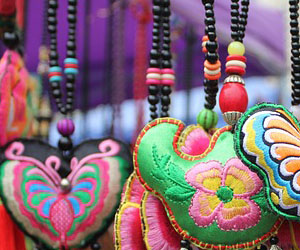 Versatility In Design: One of the satin stitch's most appealing features is its versatility. It can be used to create a wide range of designs, from simple geometric shapes to intricate, lifelike images. Whether you are working on floral motifs, animal figures, or abstract patterns, the satin stitch allows for artistic expression in various forms.
Versatility In Design: One of the satin stitch's most appealing features is its versatility. It can be used to create a wide range of designs, from simple geometric shapes to intricate, lifelike images. Whether you are working on floral motifs, animal figures, or abstract patterns, the satin stitch allows for artistic expression in various forms.
Achieving Dimension And Texture: While the satin stitch is celebrated for its smoothness, it also has the potential to add dimension and texture to embroidery projects. By altering the stitch length or layering stitches in different directions, artists can create the illusion of depth and detail, bringing designs to life.
The Importance Of Thread Selection: Thread selection is crucial when using the satin stitch. Traditional satin stitch threads include silk and rayon due to their sheen and luster. Modern options also include polyester threads that are known for their durability and colorfastness. Thread color choice plays a significant role in the overall impact of the satin stitch, enabling the creation of realistic gradients or bold, contrasting patterns.
Challenges And Techniques: While the satin stitch is beautiful, it's not without its challenges. Ensuring consistent stitch length and alignment requires practice and attention to detail. Embroiderers often use a laying tool or a frame to keep the threads smooth and untangled while stitching.
A Blooming Start To Your Green Journey
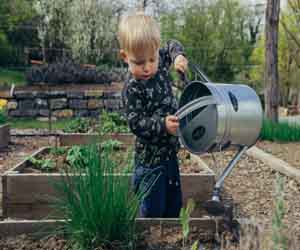 Planning Your Garden
Planning Your Garden
A well-thought-out plan can make gardening more enjoyable and less overwhelming:
Design: Sketch your garden layout and decide where you want to place different plants. Consider factors like plant height, growth habits, and aesthetics.
Plant Selection: Choose plants that are suitable for your climate, soil type, and level of maintenance. Local garden centers can provide helpful recommendations.
Maintenance Schedule: Create a maintenance schedule that includes watering, fertilizing, and pruning. Regular tasks will help your garden flourish.
Essential Gardening Tools
Every gardener needs a basic set of tools:
Hand Trowel: For digging small holes and transplanting seedlings.
Pruning Shears: To trim and shape plants.
Gloves: To protect your hands from dirt and thorns.
Watering Can Or Hose: For proper irrigation.
Garden Rake And Hoe: For weeding and soil preparation.
Caring For Your Garden
The key to a thriving garden is care and attention:
Watering: Be mindful of your plant's water needs. Overwatering can be as harmful as underwatering. Learn to strike a balance.
Weeding: Regularly remove weeds, as they compete with your plants for nutrients and sunlight.
Fertilizing: Feed your plants with the appropriate fertilizers according to their needs. Some plants thrive with organic options, while others may benefit from slow-release synthetic fertilizers.